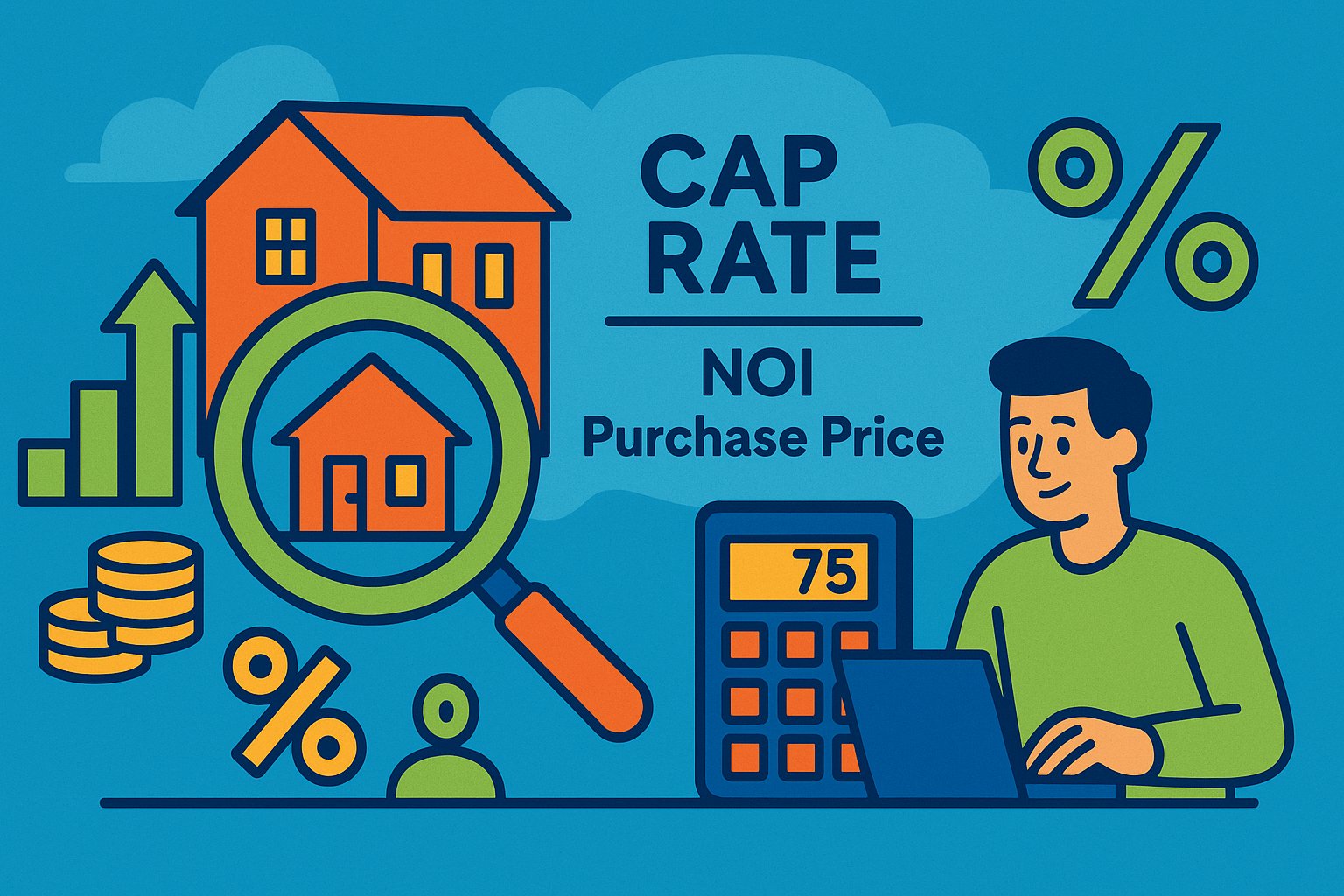Unlocking the Value Equation: Why NPV and IRR Matter
In property crowdfunding, where cash flows ebb and surge across development phases, two financial metrics rise above the rest: Net Present Value (NPV) and Internal Rate of Return (IRR). These tools translate streams of project inflows and outflows into singular values, empowering investors to compare deals on a level playing field. NPV measures the dollar value added to your investment after discounting future cash flows to today’s terms, while IRR pinpoints the annualized yield that sets cumulative present values to zero. Grasping both concepts allows crowdfunding participants to balance immediate yield against total value creation, building portfolios that resonate with personal return targets and risk appetites.
Deciphering Net Present Value: The Dollar-Driven Metric
At its core, Net Present Value calculates the difference between the current cost of an investment and the present value of expected future cash inflows, discounted at a chosen hurdle rate. Imagine a mixed-use development that requires a $1 million subscription and promises $300,000 annually over five years, plus a $1.2 million exit distribution. By applying a 10 percent discount rate, NPV translates that multi-year cash schedule into today’s dollars. A positive NPV indicates value creation above your required rate, while a negative NPV suggests you’re earning below your hurdle. In crowdfunding, this clarity helps you quantify exactly how much wealth a project adds (or subtracts), aligning investments with precise financial goals.
Unraveling Internal Rate of Return: The Percentage Powerhouse
While NPV speaks in dollars, Internal Rate of Return speaks in percentages. IRR identifies the discount rate that zeroes out an investment’s net present value, effectively annualizing cash flows across the investment horizon. It takes your initial outlay—say, $500,000 into a value-add apartment complex—and traces quarterly dividends and the lump-sum exit payment that occur over three years. The resulting IRR might be 15 percent, conveying that your money compounds at that rate each year. IRR is especially appealing for comparing projects with different scales and timelines: a short-term bridge loan at 8 percent IRR competes directly with a longer equity play targeting 12 percent, letting you match deals to liquidity preferences.
NPV vs. IRR: Complementary Perspectives
Although NPV and IRR derive from the same discounted cash flow principles, they highlight different facets of deal attractiveness. NPV anchors on absolute value—how many dollars a project contributes beyond your cost of capital—making it indispensable for assessing total dollar gains. IRR, in contrast, emphasizes efficiency, spotlighting how quickly and at what rate your capital turns over. A high-IRR flip might deliver swift, above-market returns but add modest absolute value, while a lower-IRR stabilized rental can generate substantial net dollars over a longer hold. By wielding both metrics, you gain a dual lens: NPV uncovers the biggest wealth drivers, and IRR surfaces the most efficient yield generators.
Crafting Your Cash Flow Model: The Foundation for Both Metrics
Accurate NPV and IRR calculations hinge on detailed cash flow projections. Begin by mapping all inflows—quarterly dividends, preferred returns, and project exit proceeds—against the initial capital outlay. For debt-based crowdfunding deals, list fixed interest payments and balloon payments; for equity syndications, forecast rental income, expense deductions, and sales proceeds. Ensure consistency in timing intervals—monthly, quarterly, or annual—since misalignment skews both NPV and IRR. Incorporate realistic vacancy rates, renovation budgets, and carry costs to guard against inflated returns. A robust cash flow model becomes the backbone for both NPV’s present value summation and IRR’s iterative rate solution, cementing your analytical rigor.
Selecting the Right Discount Rate: The Gatekeeper for NPV
Central to NPV is the chosen discount rate, often tied to your opportunity cost or required hurdle. In crowdfunding, this rate reflects the yield you could earn on alternative investments with similar risk characteristics—be it publicly traded REITs, corporate bonds, or peer-to-peer loans. A conservative investor might apply a 12 percent discount rate, ensuring only projects that beat high thresholds generate positive NPV. Aggressive participants could opt for 8 percent, broadening the funnel to deals with lower required yields. Adjusting the discount rate directly influences NPV outcomes: a lower rate inflates present values, while a higher rate deflates them. Sensitivity analyses across multiple discount rates reveal how robust your NPV conclusions are to changing market conditions.
Navigating IRR’s Reinvestment Assumption: A Critical Caveat
While IRR elegantly annualizes returns, it implicitly assumes that interim cash flows reinvest at the calculated IRR itself—a potentially optimistic premise. In reality, investors may only redeploy distributions at prevailing market rates, which can be lower. Modified IRR (MIRR) addresses this by allowing you to specify distinct reinvestment and finance rates, providing a more realistic picture of compound returns. When evaluating crowdfunding projects that distribute substantial dividends early, calculate both IRR and MIRR. A large divergence between the two suggests reliance on high reinvestment rates that may not materialize. Equipped with this nuance, you can temper your expectations and budget for conservative redeployment scenarios.
Comparing Projects: NPV and IRR in Deal Ranking
With multiple crowdfunding opportunities on the table, NPV and IRR become indispensable for ranking. Sort deals by NPV to identify which projects add the greatest absolute dollar value to your portfolio, ideal for long-term wealth accumulation. Alternatively, filter by IRR to spotlight the most time-efficient yield vehicles, perfect for investors chasing fast capital turnover. A two-step approach—initial IRR screening followed by NPV deep-dive—combines the best of both worlds: you shortlist the highest-yielding deals, then drill into absolute value to pinpoint the most meaningful wealth creators. This dual-filter framework ensures you allocate capital where it delivers both efficiency and substantial economic impact.
Case Study in Contrast: NPV and IRR Tell Different Tales
Consider two crowdfunded deals: Deal A is a two-year bridge loan paying 9 percent interest, returning principal at maturity. Deal B is a five-year value-add equity syndication targeting a 14 percent IRR, with periodic dividends. At a 10 percent discount rate, Deal B’s NPV may far exceed that of Deal A, due to substantial exit proceeds outweighing early cash flows. Yet Deal A’s shorter timeline and fixed interest rate deliver a competitive IRR. For an investor seeking quick capital redeployment, Deal A’s 9 percent over two years may outshine Deal B’s 14 percent over five. This example underscores why NPV and IRR can diverge and why both metrics matter in portfolio construction.
Understanding the Impact of Timing: Early vs. Late Cash Flows
NPV and IRR react differently to cash flow timing. Early distributions carry more weight in NPV’s present value summation and boost IRR due to shorter cash flow distances. In contrast, late-stage exit proceeds, while influential for NPV, may dilute IRR if they arrive far in the future. Crowdfunding deals with heavy back-loaded payoffs—like redevelopment projects with construction phases—can boast attractive NPVs yet modest IRRs. Conversely, debt deals with front-loaded interest can exhibit strong IRRs but lower NPVs. By visualizing each deal’s cash flow profile—charting the timing and magnitude of payouts—you gain intuition for how NPV and IRR will reflect different distributions, guiding timeline-aligned deal selection.
Pitfalls to Avoid: NPV and IRR Miscalculations
Common missteps can distort NPV and IRR results. Neglecting to include all cash outflows—such as acquisition fees, asset management fees, and platform charges—overstates both metrics. Failing to align cash flow intervals when discounting or iterating IRR functions leads to skewed outcomes. Using an arbitrary discount rate without market justification undermines NPV’s reliability. Relying solely on IRR without checking NPV can land you in a low-dollar, high-percentage trap. Finally, overlooking sponsor promote structures in IRR models produces inflated yields. Vigilant data entry, fee inclusion, consistent timing, and integrated waterfall modeling ensure your NPV and IRR analyses stand on solid ground.
Software and Spreadsheets: Tools for Precision
While manual NPV and IRR formulas deepen conceptual understanding, spreadsheet functions streamline the heavy lifting. Excel’s NPV() and IRR() functions accept ranges of cash flows, automating present value summations and iterative rate solutions. More advanced plugins and dedicated real estate investment software can model complex waterfalls, incorporate fee permutations, and generate sensitivity tables at the click of a button. Some crowdfunding platforms offer downloadable cash flow schedules formatted for instant import into your spreadsheet. Regardless of tool choice, always audit the underlying cash flows and discount or reinvestment rate inputs to safeguard against “black box” errors that obscure critical assumptions.
Holistic Decision Making: Beyond the Numbers
Although NPV and IRR are potent, they represent only part of the investment mosaic. Qualitative factors—sponsor track record, market fundamentals, legal safeguards, and platform reliability—wield equal influence on real-world outcomes. A deal with stellar NPV and IRR but a novice sponsor in an untested market may falter, while a slightly lower-yielding project backed by a veteran team in a strong locale could exceed projections. Incorporate qualitative due diligence alongside quantitative metrics: visit comparable properties when feasible, review sponsor case studies, and analyze local demographic trends. This blend of art and science transforms raw NPV and IRR data into well-rounded investment judgments.
Crafting Your Metric-Driven Strategy
To harness NPV and IRR effectively, define personal investment guidelines. Establish minimum NPV thresholds at your preferred discount rates and IRR targets aligned with your liquidity needs. Build a deal evaluation template that calculates both metrics for every opportunity, flags those meeting your criteria, and logs supporting data—cash flow schedules, discount rates, and IRR sensitivities. Regularly review your historical NPV and IRR outcomes to recalibrate benchmarks based on realized performance. Over time, this disciplined, metric-driven approach refines your deal-hunting process, ensuring you consistently identify property crowdfunding opportunities that deliver both economic value and efficient yield.
Looking Ahead: Evolving Financial Analytics in Crowdfunding
As technology advances, crowdfunding platforms are integrating machine learning algorithms to propose personalized discount rates and benchmark IRRs based on investor profiles and deal attributes. Blockchain-based smart contracts promise automated distribution tracking, feeding real-time cash flows directly into NPV and IRR models. Data visualization tools are emerging to plot dynamic NPV and IRR surfaces under varying market scenarios, helping investors interactively explore risk-return trade-offs. Staying attuned to these innovations positions you at the forefront of financial analysis in crowdfunding, transforming NPV and IRR from static outputs into living, adaptable decision engines.
Converging Value and Yield for Smarter Investing
Understanding and leveraging both Net Present Value and Internal Rate of Return is pivotal for triumphant property crowdfunding investing. NPV grounds you in absolute dollar gains, ensuring your commitments beat opportunity costs, while IRR sharpens your view of capital efficiency across varying timelines. By constructing meticulous cash flow models, selecting appropriate discount and reinvestment rates, stress-testing assumptions, and integrating waterfall complexities, you build a robust analytical framework. Paired with rigorous qualitative due diligence and strategic portfolio management, NPV and IRR mastery empowers you to navigate the diverse world of real estate crowdfunding with precision, confidence, and the promise of lasting wealth creation.




